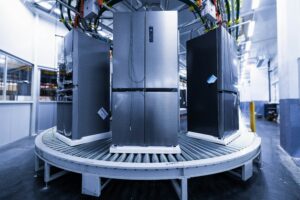
Photo by Triyansh Gill on Unsplash
Tesla Releases Strong Q3 Earnings, Predicts Higher EV Deliveries
October 24, 2024
Tesla reported 2024 third-quarter revenue earnings of $25.18 billion, an 8% jump over Q3 2023. Also announced were adjusted earnings per share of $0.72, beating analysts’ estimates of $0.59, on $2.51 billion adjusted net income.
“We delivered strong results in Q3 with growth in vehicle deliveries both sequentially and year-on-year, resulting in record third-quarter volumes,” Tesla wrote in its earnings deck.
The company expects vehicle deliveries to increase slightly by the end of the year. During a call with investors, Tesla CEO Elon Musk predicted vehicle deliveries will grow 20%-30% in 2025.
On Oct. 22, Tesla manufactured its 7 millionth vehicle, per the earnings report. Additionally, the company noted it makes the top three best-selling electric vehicles in the U.S. — the Model Y, the Model 3, and the Cybertruck.
While Americans seem to have little interest in buying a battery-powered vehicle, sales of EVs are on the rise. In Q3 2024, just over 346,300 EVs were purchased overall, a 5% surge over the same period last year.
‘More Affordable’ Tesla EVs
Right now, Tesla’s lowest-priced EV, the Model 3, is just under $42,500 without subsidies. However, the EV maker may introduce a car with a price tag below $30,000.
“Preparations remain underway for our offering of new vehicles — including more affordable models — which we will begin launching in the first half of 2025,” stated Tesla. “These vehicles will utilize aspects of the next generation platform as well as aspects of our current platforms and will be able to be produced on the same manufacturing lines as our current vehicle lineup.”
Plans for an entry-level $25,000 “Model 2” were reportedly abandoned earlier this year. Yet, it seems a lower-cost model coming out next year is still a possibility, even though Tesla is pivoting focus to its self-driving robotaxi.
According to Musk, the Tesla Cybercab will be ready for mass production in 2026, with a goal to output 2 million units per year. Testing is currently underway in California as employees are summoning and riding in the robotaxi alongside human safety drivers.
Recent News








